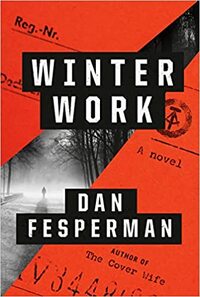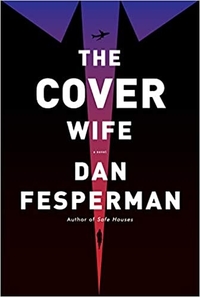Winter Work by Dan Fesperman
 Wednesday, July 6, 2022 at 6:22AM
Wednesday, July 6, 2022 at 6:22AM 
Published by Knopf on July 12, 2022
Most of spy fiction’s best novels are set in the Cold War. Winter Work comes at the end of that war. The Berlin Wall has been down for about four months. East Germany is transitioning to unification. The Stasi offices are closed; files that were not burned are being ransacked or sold.
Emil Grimm is a former Stasi officer who is now unemployed. He had a desk job, running the Stasi operation to spy on NATO. He worries that the unified Germany will prosecute him for treason, as if he had some duty to be loyal to West Germany when he was a citizen of East Germany. His more urgent concern is how to pay for his wife’s medical treatment until reunification brings her into (West) Germany’s system of free healthcare. Emil’s wife is dying of a progressive disease and can no longer move.
Emil has a dacha outside Berlin and an apartment in the city, closer to his shuttered headquarters. One of his neighbors, Lothar Fischer, is also a Stasi officer. On his morning walk, Emil discovers Lothar’s body. The Stasi are already there, supposedly investigating, but they are soon chased away by the local police, who feel empowered to do their jobs now that the Stasi are no longer a thing.
Lothar apparently shot himself. Emil knows he was murdered. Emil also knows that Lothar was up to something. Emil knows that because he was up to something with Lothar.
On the novel’s other front, the CIA’s DDO is trying to get in bed with a Russian who wants to sell the identities of all the former Stasi agents. Claire Saylor (a key characters in The Cover Wife) has been contacting former Stasi agents to see if they have information they want to sell. She’s going behind her boss’ back to get off-the-books help from Clark Baucom, a retired CIA agent. The DDO assigns another agent to keep her under control. That agent also has a central role in The Cover Wife, making Winter Work the origin story of their teamwork.
Claire and her partner take an interest in Emil. That interest leads to conflict with the Russian and to escalating tension as the story nears its climax. The action is never over-the-top — this isn’t a tough guy novel — but the risks faced by the novel’s central characters create fear that the reader shares.
Dan Fesperman is a reliable spy novelist. Winter Work is rooted in Cold War history, as Fesperman explains in his acknowledgements. I don’t usually read acknowledgements, but Fesperman’s explanation of CIA and Russian activities soon after the fall of the Berlin Wall adds interest to the story.
Given the horrible reputation of the Stasi, it’s intriguing that Fesperman makes Emil a sympathetic figure. As Claire notes, Emil is “an adversary who has already been defeated.” He doesn’t seem to deserve further punishment, particularly the kind of punishment that will be awaiting him if he’s caught. Emil’s disabled wife encouraged him to form a sexual bond with her caretaker. Emil’s devotion to both of them, the fact that he didn’t actually order anyone’s death as a Stasi agent, and his remorse for being on the wrong side of history make it possible for the reader to hope he survives. In the tradition of strong spy novels, Winter Work illustrates how fuzzy the line between good guys and bad guys can become in the shadowy world of espionage.
RECOMMENDED
 TChris |
TChris |  Post a Comment |
Post a Comment |  Dan Fesperman,
Dan Fesperman,  spy in
spy in  Thriller
Thriller 
